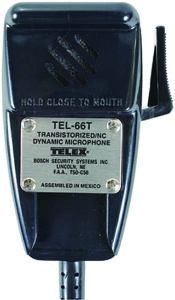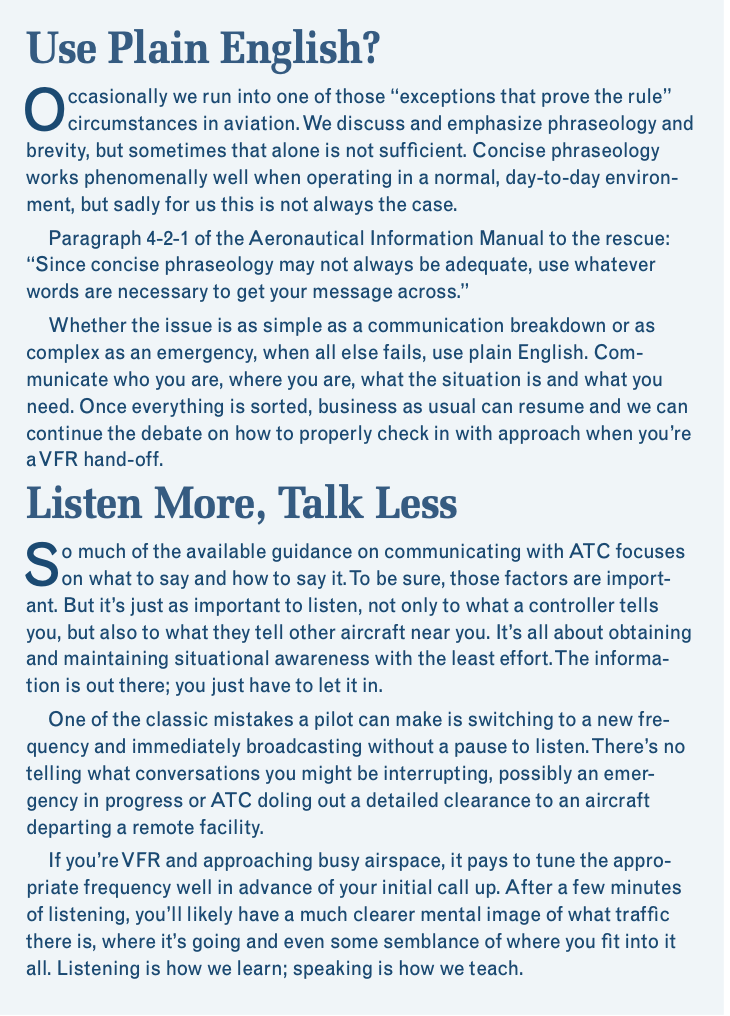I did my primary flight training at a slow, towered airport, where our flight school consisted of about 70% of the traffic taking off and landing. There was a commuter operation with three or four flights a day, and occasional private jet and corporate traffic. The controllers were fantastic about slowing down calls for student pilots, and the flight school regularly scheduled visits to the tower so we could see how the other side operates.
For variety, we often did pattern work at the nearby non-towered field, which truly felt pilot-controlled. There were a few additional flight schools at that airport, plus more jet traffic. The pattern frequently had six to eight aircraft in it, with a jet on a long final. I have often heard that pilots who train at towered airports are more comfortable at towered airports, and pilots who training at non-towered airports prefer non-towered airports. Luckily for me, comfort is usually the result of a healthy dose of exposure therapy.
When everything started coming together before my private pilot checkride, confidence in my communication was at an all-time high. Fear not, because my instrument rating took care of that. The first time I heard something like, “Skyhawk 12345, you are five miles from the final approach fix, turn left heading 270, maintain 2000 until established, cleared for the ILS Runway 23 approach,” I just looked at my instructor like a deer in the headlights. Ebbs and flows of confident comms continued throughout my career. It seemed like with each new airplane, new callsign, new experience (my first radio call in the flight levels where I said we were climbing to 24,000 feet, instead of FL240 comes to mind), I had to recalibrate my radio work. Turns out, like many aspects of aviation, communication is just one of things that I will be working on until I decide to hang it up, hopefully many years from now. In the meantime, here are some of the tips and tricks I have used over the years to try to optimize understanding between myself and all the other moving pieces we encounter while flying.
PRACTICE
It seems obvious, but I have experienced many pilots who are uncomfortable with busier airports or want some company the first time they are going somewhere new and use our flight review to check that box. I think this is an excellent strategy, because at the end of the day, going out there and doing it is the best way to improve. Taking a CFI or another pilot is not a bad idea to help keep situational awareness up and mitigate any threats caused by radio flubs.
Once you get to a base level of comfort and proficiency, mindful flying can help with communication because you will start to anticipate calls. The dreaded final approach clearance while flying IFR almost always comes from a base leg vector or while in a position to be cleared to an initial approach fix. That level of anticipation makes answering intimidating calls so much easier.
Building a mental map of your flight path and the general direction of the traffic keeps you ahead of the airplane, whether you are at a busy non-towered airport or in the terminal/approach environment. Once you can paint a picture of a traffic pattern flow with six planes in the pattern or you can anticipate when you will be vectored based off the traffic in front of you going to the same airport, not only will your situational awareness be substantially higher, but you also will find that radio calls will be much easier.
If you are ever stuck on the ground and want some additional tools, www.liveatc.net allows you to listen to a number of different approach, departure and center frequencies. I spent a lot of time listening to LiveATC with an airport diagram up, trying to figure out where everyone was and how I would answer the clearances assigned. This is a useful (and free!) tool for additional exposure to different ATC environments.

It is important to remember that behind each transmission from another aircraft in the pattern or a controller is coming from another human being. One of the times where I have been left high and dry by a crewmember during a go-around was because they decided to argue with the controller about said go-around. I have heard multiple futile exchanges between pilots or between a pilot and a controller that did nothing to improve situational awareness for either party.
With the prevalence of social media and websites like YouTube, events like this may not be happening more frequently, but they certainly have more visibility.
If there are two types of people in aviation you cannot win an argument with, it’s ATC and TSA. It does not matter who was right and who was wrong. If there was a real safety concern, you can attempt to reach out to the controlling agency and sort everything out once safely on the ground. Additionally, filing a NASA ASRS report is always a good idea whenever communications do not go as expected. Even if you feel there is no enforcement risk, the data is always appreciated.
PHRASEOLOGY
I always thought my phraseology was decent. Like most of us, I flubbed the occasional radio call, but I really enjoyed the art of perfecting my comms. Then I started instructing in the simulator, and the gentleman training me actually went through ATC training. It is hard to comprehend the level of experience and competence exuding from an excellent air traffic controller at a well-run facility. After my amateurish attempts at playing controller, I was given homework: Review the Pilot Controller Glossary and Chapter 4 of the AIM, specifically Section Two. If you ever feel unsure about how a radio call should be phrased, these references are a great starting point.
Many pilots out there get so in the weeds with phrasing, they lose the forest for the trees. Technically, saying, “XYZ approach, Skyhawk 123 is checking in, with you at 3000 feet,” gets the message across, and frankly is not outside the ACS standards. I would not personally correct this behavior during a flight review, for example. Yet…isn’t the act of calling XYZ approach with your altitude checking in? Is it not obvious with whom you are calling when you say “XYZ approach” at the beginning of the radio call? “XYZ approach, Skyhawk 12345, 3000 feet,” says the same thing with about half the words. Will this matter most of the time? No. But I will leave this section with two points.
Most of the time when I hear pilots concerned about communication, it is due to extremely busy airspace. It will make everyone’s life easier to reduce unnecessary radio clutter.
As loyal readers of this magazine, are we not striving for continual improvement? While it may never be achieved, proper phraseology is just one more step toward the ever-elusive perfect flight.

TIPS AND TRICKS
Test your equipment as much as possible before departing, especially in instrument conditions. Your communication could be perfect, but if a radio or headset issue pops up it will all be for naught.
Always, always, always ask for clarification if you are unsure of a clearance or what is expected of you. Good controllers will even thank you for checking. If a controller seems exasperated, I promise an extra radio call to prevent an issue is easier than the hassle if there is a loss of separation or airspace bust.
THINK FIRST, THEN SPEAK
You have probably heard this one, but just in case you haven’t, I will repeat it. It is a push-to-talk button, not a push-to-think button. Often you may feel time pressure to respond to a radio call, and that is fine. Do what you have to do. But if you are initiating a radio communication, make sure you know what you are going to say before keying the mic. Starting a communication on the right foot will help everything run smoothly.
While it is challenging to uphold sterile cockpit rules in many situations, such as flying with kids, include an easy way to signal quiet from passengers during the preflight brief. I would wager that a substantial amount of missed radio calls occur due to chatter in the cockpit. If you have an intercom mute capability, use it.
Notice how controllers issue clearances and how experienced pilots make position reports. Obviously, there are exceptions, not all controllers use perfect phraseology and not all pilots have regard for the AIM (anyone still hearing “any traffic in the area please advise” at their local airport?). Reading back instructions the way ATC issues them and emulating pilots that provide the right amount of information in their position reports is an excellent jumping-off point for perfecting communications.
Developing our communication abilities as aviators (and as humans in general) is something we should all strive for. Despite communicate being third in the pecking order, miscommunications can distract from aviating and causes errors in navigation. Improving these skills will pay off in dividends, helping to make safer skies.
After a career as a Part 135 pilot, flight instructor and check airman, Ryan Motte recently got hired by a major airline and is now flying as a Part 121 first officer




